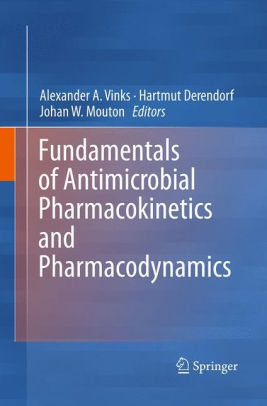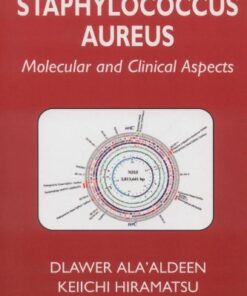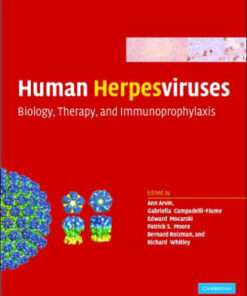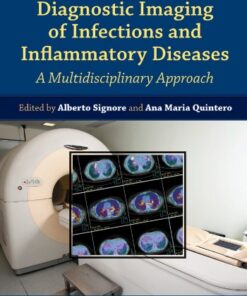(eBook) Fundamentals of Antimicrobial Pharmacokinetics and Pharmacodynamics By Alexander A. Vinks
$22.00
Download instantly Fundamentals of Antimicrobial Pharmacokinetics and Pharmacodynamics By Alexander A. Vinks, Johan W. Mouton. It is ebook in PDF format.
ISBN-10: 0387756124 ISBN-13: 9780387756127
Preview
This is the PDF eBook version for Fundamentals of Antimicrobial Pharmacokinetics and Pharmacodynamics By Alexander A. Vinks, Johan W. Mouton
Table of Contents
Contributors
Part I Basic Concepts and Principles
Chapter 1: Introduction to Pharmacodynamics
Introduction
Time Course of Antimicrobial Activity
Patterns of Antimicrobial Activity
Magnitude of Index Required for Efficacy
Factors Affecting the Magnitude of the Index Required for Efficacy
Dosing Regimen
Protein Binding
Antibiotic Class
Organism and Strains
Presence of Drug Resistance Mechanisms
Immunity Status
Site of Infection
Inoculum Size
Drug Combinations
PK/PD Targets for Resistance Suppression
Applications of PK/PD
New Optimal Dosage Regimens
Development of New Antimicrobials and Formulations
Susceptibility Breakpoint Determinations
Guidelines for Empiric Therapy
Formulary Development
Conclusions
References
Chapter 2: In Vitro and Animal PK/PD Models
Introduction
In Vitro Models
In Vitro Time–Kill Curves at Increasing Concentrations
Persistent Effects
In Vitro Kinetic Models
Specialized In Vitro Kinetic Models
Animal Infection Models
Mouse Thigh-Infection Model
Peritonitis Infection Model in Mice and Rats
Pneumonia Models in Mice, Rats, and Guinea Pigs
Other Animal Models
Endocarditis Models
Meningitis Models
Abscess Models
References
Chapter 3: Setting Clinical MIC Breakpoints from a PK/PD Point of View: It Is the Dose That Matters
Introduction
Clinical Breakpoints for New Drugs: First Stage
Establish PK/PD Index That Is Correlated with Effect
Setting a Pharmacodynamic Target: Preclinical Studies
Determine Protein Binding in Mice and in Humans
Determine the Wild Type Distribution of Microorganisms to Be Covered
Set the Highest MIC That Proposed Dosing Regimens Are Required to Cover (Usually the Highest ECOFF
Establish the Dose–Exposure Relationship of the Drug
Determine Dosing Regimens That Cover Target Microorganisms: Expected Exposures and Monte Carlo Simu
Clinical Breakpoints and Dosing Regimens for New Drugs: Second Stage
Clinical Breakpoints for “Old” Drugs
Conclusion
References
Chapter 4: Principles of Applied Pharmacokinetic–Pharmacodynamic Modeling
PKPD Modeling in Anti-infective Research
MIC-Based Approach
PKPD Modeling of Microbial Kill Curves
The Logistic Growth Model
The Compartmental Model
Modifications on the Logistic Growth Model
Examples of the Compartmental Model
Drug Effects
Application and Limitation of Antimicrobial PKPD Models
Clinical Applications
Conclusions
References
Chapter 5: Pharmacodynamic In Vitro Models to Determine the Effect of Antibiotics
Introduction
Why Do We Need In Vitro Models?
What Are the Minimum Requirements for In Vitro Models?
Determine Terms
Static Models
MIC
Flask Model
Dynamic Models
Dilution Models
One-Compartment Models
Continuous Dilution with Increasing Volume
Stepwise Dilution
Continuous Dilution
Two-Compartment Models
Multi-compartment Models
Dialysis or Diffusion Models
Artificial Barrier
Natural Barrier
Conclusion
References
Chapter 6: Population Pharmacokinetic–Pharmacodynamic (PK/PD) Modeling of Anti-infective Agents
Introduction
Population Pharmacokinetic Modeling
Methods of Population Modeling
Naïve Pooling
Standard Two-Stage Approach
Iterative Two-Stage Bayesian Approach
Nonlinear Mixed Effect Modeling
Nonparametric Expectation Maximization
Markov Chain Monte Carlo Population Modeling
Development of a Population Model: An Example
Application of Population Models
Clinical Trial Simulation
Modeling of Target Attainment
Bayesian Forecasting
PK/PD Model-Based Antimicrobial Therapy
Conclusions
References
Chapter 7: Suppressing Resistance Development
Background
Emphasis of Prior Efforts
Resistance on the Rise
Factors Influencing the Development of Resistance
Mechanism of Resistance
Natural Resistant Mutants
Immune Function
Drug Exposure
Time of Drug Exposure
Complexity of Dosing Regimen Design
Too Complex for Comprehensive Testing of All Possibilities
Modeling Goal
Different Approaches to Delineate the Drug–Pathogen Relationship
Fundamental Selection Concept
Standard Methods Not Informative
PK/PD Surrogate Indices
Dynamic Approach
Available Evidence
In-Vitro Data
In Vivo Data
Clinical Studies
Currently Unanswered Questions
Inoculum Effect
Mutation During Exposure
Collateral Damage
Biofitness of Resistant Mutants
Probability of Target Attainment from Pharmacokinetic Variability
Conclusion
Appendix 1: Complexity in Dosing Regimen Design
References
Chapter 8: Drug–Drug Combinations
Introduction
Combinations for Therapeutic Synergy
In Vitro Methods for Synergy Testing
Serious Pseudomonas aeruginosa Infections
In Vitro Data
In Vitro Pharmacodynamic Models
Animal Model Data
Clinical Studies
Efficacy of Combinations
Prevention of Resistance Emergence During Treatment
Endocarditis
In Vitro Data
Viridans Streptococci
Enterococci
Staphylococci
In Vitro Pharmacodynamic Models
Viridans Streptococci
Enterococci
Staphylococci
Animal Model Data
Viridans Streptococci
Enterococci
Staphylococci
Clinical Studies
Viridans Streptococci
Enterococci
Staphylococci
Conclusions
References
Part II Clinically Oriented Chapters
Chapter 9: Aminoglycosides
Introduction
Mechanism of Action of Aminoglycosides
Microbiologic Spectrum
Pharmacokinetic Characterization
Absorption
Distribution
Elimination
Pharmacodynamic Overview
Postantibiotic Effect
Resistance and Synergy
Toxicodynamics
Clinical Usage and Application of Pharmacodynamics
Direct Delivery to the Site of Infection
New Agents
Conclusion
References
Chapter 10: Continuous Infusion of Beta-lactam Antibiotics
Introduction
PK/PD of Beta-lactams
In Vitro Pharmacodynamic Effects
Studies in Animals
Studies in In Vitro Models Simulating Human Pharmacokinetics
Conclusions from Pre-clinical Models
Comparative Studies in Humans
Pharmacokinetic Studies
Efficacy Studies
Feasibility Studies
Stability
Toxicity
Arguments Against Continuous Infusion
An Alternative to Continuous Infusion: Extended Infusion
Dosing
Special Situations or Patient Populations
Critically Ill Patients
Cystic Fibrosis
Perioperative Prophylaxis
Outpatient Intravenous Therapy
Continuous Infusion for the Treatment of Resistant Micro-organisms
Conclusion
References
Chapter 11: Macrolides and Ketolides
Pharmacokinetic Development of Macrolides and Ketolides and Impact of Chemical Structure on Pharmaco
Pharmacokinetics
General Pharmacokinetic Properties
Absorption
Distribution
Elimination
Cellular Pharmacokinetics
Pharmacodynamics
In Vitro Pharmacodynamic Studies
In Vitro Pharmacodynamic Models
Intracellular Pharmacodynamics
Animal Models
Human Pharmacodynamics
New Formulations
Extended Release
Aerosols
Conclusion
References
Chapter 12: Glycopeptides
General Description
Pharmacokinetics
Bioavailability
Protein Binding
Pharmacokinetic Profiles in Serum
PK of Vancomycin
Children
Renal Impairment
Impaired Hepatic Function
Pregnancy
Obesity
Critically Ill Patients
Cancer Patients
PK of Teicoplanin
Children
Renal Impairment
Critically Ill
PK of Telavancin
Elderly
Hepatic Impairment
Elimination
Elimination of Vancomycin
Elimination of Teicoplanin
Elimination of Telavancin
Pharmacodynamics
Effects on the Pathogen
In Vitro Susceptibility of (Lipo)glycopeptides
PK/PD Effects of Vancomycin
In Vitro
Patient Studies
PK/PD Effects of Teicoplanin
In Vitro Studies
Animal Models
Patient Studies
PK/PD Effects of Telavancin
In Vitro
Animal Models
Effects on the Host: Concentration-Related Toxicity
Toxicity of Vancomycin
Toxicity of Teicoplanin
Toxicity of Telavancin
Implementation of PK/PD Knowledge into Clinical Practice
Vancomycin: Higher Doses and Continuous Infusion
Teicoplanin: Higher Dosage Regimens
Vancomycin and Teicoplanin: Therapeutic Drug Monitoring
Clinical Vignette 12.1: TDM of Vancomycin Administered by Continuous Infusion
Clinical Vignette 12.2: Infected Aortic Prosthesis Treated with Teicoplanin i.v./i.m.
References
Chapter 13: Clinical Pharmacodynamics of Quinolones
Introduction
PK/PD Indices Linked to Outcomes for Quinolones
Therapy of ICU Infections
Therapy of Community-Acquired Infections
Quinolones for Therapy of Mycobacterium tuberculosis
Quinolones for the Therapy of Select Agents Such as Anthrax and Plague
Bacillus anthracis
Yersinia pestis
Conclusion
References
Chapter 14: Pharmacokinetics and Pharmacodynamics of Colistin
Introduction
Important Aspects of Chemistry
Antibacterial Properties
Spectrum of Activity
Susceptibility Breakpoints
Mechanisms of Activity and Resistance
Inconsistent Labelling and Dose Regimens of Pharmaceutical Products
Pharmacokinetics, Pharmacodynamics and Pharmacokinetic/Pharmacodynamic Relationships
Important Methodological Considerations for PK, PD and PK/PD Studies
Overview of the Pharmacokinetics of CMS and Formed Colistin
Pharmacodynamics of Colistin
Which Pharmacokinetic/Pharmacodynamic Index Is Most Predictive of Efficacy?
How Appropriate Are Current Dosage Regimens?
Conclusions
References
Chapter 15: Daptomycin: Pharmacokinetic, Pharmacodynamic, and Dose Optimization
Introduction
Pharmacokinetics
General Pharmacokinetic Properties
Special Populations
Obesity
Patients with Renal Dysfunction
Young and Geriatric Populations
Other Patient Populations
Pharmacodynamics
In Vitro and In Vivo Assessment of Daptomycin PD Parameters
Combinations Therapy
Experimental In Vitro and In Vivo PK/PD Models
Clinical Case Reports
Combination or No Combination Therapy?
Resistance
Optimizing Patients Outcomes by Optimizing Daptomycin Use
High-Dose Daptomycin: Safety and Efficacy
Other Strategies
Conclusion
References
Chapter 16: PK/PD of Oxazolidinones
Introduction
Pharmacokinetics of Linezolid
Linezolid Concentration at the Site of Infection
Pharmacokinetic Interactions
Pharmacokinetics in Special Patient Groups
Pediatric Patients
Patients with Impaired Renal or Hepatic Function
Obese Patients
Critically Ill Patients
Pharmacodynamics
Antimicrobial Activity
Resistance
Pharmacokinetics/Pharmacodynamics
PK/PD in In Vitro and In Vivo Systems
PK/PD in Humans
PK/PD and Resistance
PK/PD and Toxicity
Therapeutic Drug Monitoring
Dosing Implications
PK/PD and New Oxazolidinones
Tedizolid (Cubist Pharmaceuticals)
Radezolid (Melinta Therapeutics)
Outlook
References
Chapter 17: Tigecycline
Introduction
Pharmacokinetics
Special Populations
Renal Insufficiency
Hepatic Insufficiency
Pharmacodynamics
In Vivo and In Vitro Assessment of Pharmacodynamics
Clinical Pharmacodynamic Assessment Through Exposure–Response Analysis
Exposure–Response in Complicated Intra-abdominal Infection
Exposure–Response in cSSSI
Exposure–Response in Pneumonia
Toxicodynamics
Immunomodulatory Effects
Conclusion
References
Index




